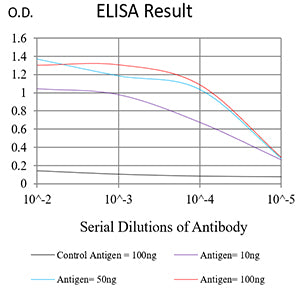
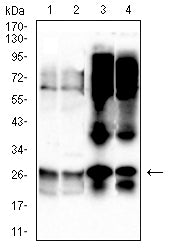
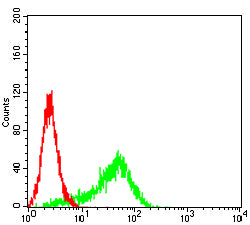
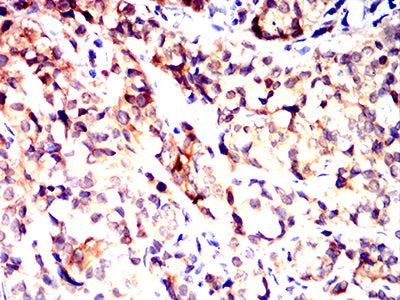
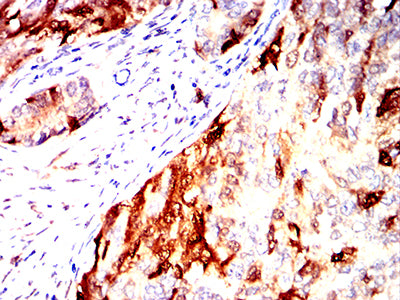
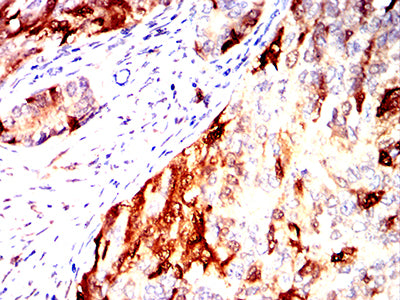
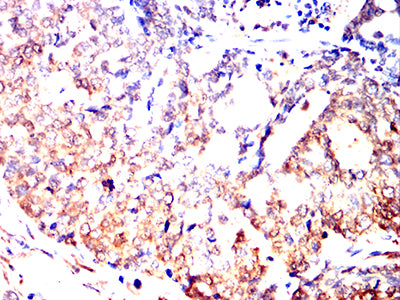
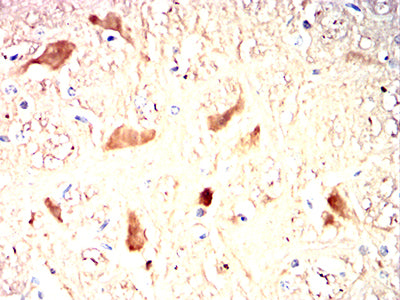
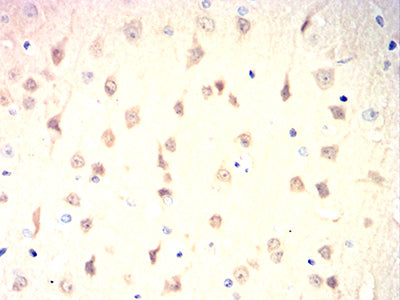
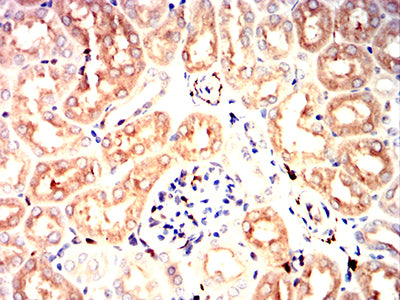
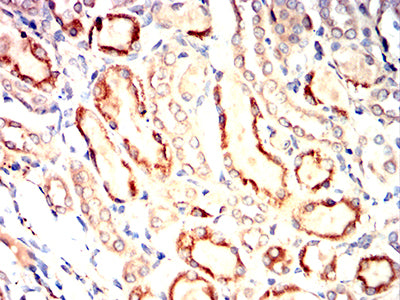
| WB | 1/500 - 1/2000 | Human,Mouse,Rat |
| IF | 咨询技术 | Human,Mouse,Rat |
| IHC | 1/200 - 1/1000 | Human,Mouse,Rat |
| ICC | 技术咨询 | Human,Mouse,Rat |
| FCM | 1/200 - 1/400 | Human,Mouse,Rat |
| Elisa | 1/10000 | Human,Mouse,Rat |
| Aliases | NDGOA; PARK5; PGP95; SPG79; PGP9.5; UCHL-1; Uch-L1; HEL-117; PGP 9.5; HEL-S-53 |
| Entrez GeneID | 7345 |
| clone | 1D1B12 |
| WB Predicted band size | 24.8kDa |
| Host/Isotype | Mouse IgG2b |
| Antibody Type | Primary antibody |
| Storage | Store at 4°C short term. Aliquot and store at -20°C long term. Avoid freeze/thaw cycles. |
| Species Reactivity | Human, Mouse, Rat |
| Immunogen | Purified recombinant fragment of human UCHL1 (AA: 1-220) expressed in E. Coli. |
| Formulation | Purified antibody in PBS with 0.05% sodium azide |
+ +
以下是关于UCHL1抗体的3篇代表性文献的简要总结(示例格式,仅供参考):
1. **文献名称**:*UCHL1 mutations in Parkinson’s disease*
**作者**:Liu Y, et al.
**摘要**:该研究首次报道了UCHL1基因突变与家族性帕金森病的关联,并利用特异性抗体检测患者脑组织中UCHL1蛋白表达下降,提示其功能异常可能导致泛素-蛋白酶体系统紊乱。
2. **文献名称**:*UCHL1 as a novel biomarker for traumatic brain injury*
**作者**:Mondello S, et al.
**摘要**:通过ELISA和Western blot分析,研究发现脑损伤患者血清中UCHL1水平显著升高,表明其作为中枢神经系统损伤特异性生物标志物的潜力,抗体检测具有临床诊断价值。
3. **文献名称**:*UCHL1 promotes lung cancer progression by stabilizing β-catenin*
**作者**:Chen X, et al.
**摘要**:利用UCHL1抗体进行免疫共沉淀实验,揭示UCHL1通过去泛素化作用调控β-catenin蛋白稳定性,促进肺癌细胞侵袭转移,为靶向治疗提供依据。
(注:以上为模拟示例,实际文献需通过数据库检索核实。)
The ubiquitin C-terminal hydrolase L1 (UCHL1), also known as PARK5. is a deubiquitinating enzyme highly expressed in neurons. It plays a dual role in maintaining ubiquitin homeostasis by hydrolyzing polyubiquitin chains to recycle free ubiquitin and stabilizing monomeric ubiquitin. UCHL1 is implicated in regulating protein degradation, synaptic function, and oxidative stress response. Its dysfunction has been linked to neurodegenerative diseases, particularly Parkinson’s disease, where mutations (e.g., S18Y, I93M) correlate with altered enzymatic activity and disease susceptibility. UCHL1 is also associated with Alzheimer’s disease, traumatic brain injury, and certain cancers.
Antibodies targeting UCHL1 are widely used in research to study its expression, localization, and pathological mechanisms. They serve as critical tools in immunohistochemistry (IHC), western blotting, and immunofluorescence to identify neuronal populations or assess UCHL1 levels in disease models. Specific antibodies can distinguish between native and oxidized forms, aiding in studies of oxidative damage. In diagnostics, UCHL1 antibodies help detect neuronal injury biomarkers in cerebrospinal fluid. However, variability in antibody specificity across commercial sources requires careful validation. Recent therapeutic strategies explore modulating UCHL1 activity, highlighting its potential as a drug target.
×